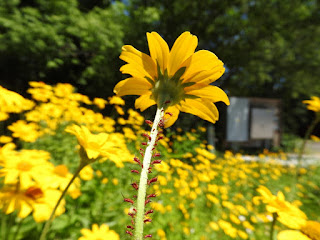Natural
Connections Book Tour
August
21-29, 2019
I still have some time to fill. If you'd like to host a book signing, talk, or workshop, please let me know!
Wednesday,
August 21
Program at
the Kickapoo Valley Reserve?
Looking for
hosts!
Thursday,
August 22—Retzer Nature Center
6:30-7:30-public program
“Nature Better than Fiction”
Friday, August 23 ???
Saturday,
August 24—Retzer Nature Center
9:30-2:30, Book signing at the Green Alliance
Sustainability Fair @ RNC
Sunday, August 25—open?
Monday, August 25--morning open?
Monday, August 26—Schlitz Audubon Center
Hike with Emily Stone and Don Quintenz
Monday, August 26 | 4:00pm - 5:00pm
Join
Emily Stone, a Naturalist
and Education Director at the Cable Natural History Museum, and Don Quintenz,
for a guided hike exploring the natural wonders of the season.
Emily Stone, author of Natural
Connections 2
Monday, August 26 | 6:00pm - 7:30pm
Emily Stone, a Naturalist and Education
Director at the Cable Natural History Museum, will read from and talk about her
new book, Natural Connections 2: Dreaming of an Elfin
Skimmer. She uses science to tell complex stories
in readable, enjoyable ways that are full of wonder for nature, weaving a world
of magic for readers. Emily writes a weekly column called “Natural Connections”
for 20 local and regional newspapers. She has earned several
Excellence in Craft awards from the Outdoor Writers Association of America. Her
first book, Natural Connections: Exploring Northwoods Nature through
Science and Your Senses was published in 2016. Books will be available for
purchase; the author will be happy to sign them.
Tuesday, August 27—Lake Geneva area
Finding the Stories in Nature for
Kids
Kishwauketoe Preserve. 10:00-11:30 a.m.
Stories are powerful
tools for engagement, learning, and relating for all ages. But we don’t need to
invent anything—nature has already done it for us. During this program for
young learners, Emily Stone, author, naturalist, and Education Director at the
Cable Natural History Museum will lead nature discovery activities infused with
her own playful sense of wonder. By using science to tell stories, Emily wields
a magic that makes the whole world feel more alive. 1.5 hours
Finding the Stories in
Nature
This is a 1.5-2 hour talk/workshop
at the library
Stories are powerful tools for
engagement, learning, and relating. But we don’t need to invent anything—nature
has already done it for us. Scientists are busy translating. These stories can
make natural phenomenon come alive for any audience! During this workshop,
Emily will share some of her favorite stories and photos, including readings
from her Natural Connections books. Then, through a series of props, writing,
and speaking exercises, participants will have a chance to practice finding and
telling the stories in nature. Presenter: Emily Stone, Naturalist/Education
Director, Cable Natural History Museum.
Wednesday, August 28—Lake Geneva
area
All day:
Hike around the Shore Path.
Thursday, August 29—Lake Geneva area
Morning:
3 hour hike, for naturalists and
volunteers. “train the teachers.”
Finding the Stories in Nature
Walking Workshop
Join Emily Stone, a Naturalist and
Education Director at the Cable Natural History Museum, on a guided hike to
explore natural connections through science and our senses. She’ll give tips
and tricks for finding the stories in nature, and we’ll all practice creating
mini-narratives about the characters we meet along the way. As naturalists,
infusing our teaching and communications with stories can be an effective way
to engage both hearts and minds.
Afternoon:
Drive north!









































